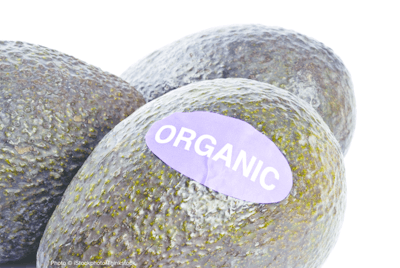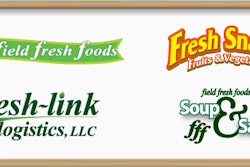
According to the International Federation of Organic Agriculture Movements (IFOAM), organic food is a $63 billion industry worldwide. Furthermore, between 2002 and 2011, the industry grew 170 percent, or about 19 percent annually, with the U.S. comprising the single largest market for organic food and beverages.
Organics are not only popular with consumers; even logistics companies see the advantages of acquiring the necessary certifications to grow, transport and handle organic products.
In the warehousing and distribution sector, earning the Organic Distributor certification from Quality Assurance International (QAI) is an achievement that sets those companies in the logistics industry apart from other food grade operators.
QAI is the leading provider of organic certification services verifying organic integrity throughout the supply chain. The organization is a USDA-accredited certifying agency, approved to provide organic certification in accordance with the USDA’s National Organic Program (NOP).
In September, Prism Team Services, based in the San Francisco Bay Area, was awarded the Organic Distributor certification, which allows the company to repack and provide value-added services for their organic product customers.
“As consumers become increasingly attentive to food labels, ingredients and the way their food is processed, we expect to see continued growth in Organic and natural food markets in this region and nationwide. The entire Prism team is committed to achieving and maintaining the highest caliber of service possible for this important and growing customer segment,” said Jere Van Puffelen, President of Prism Logistics.
Prism Team Services in Hayward, Calif., was the first of the company’s four facilities to be certified and the firm expects to expand the program throughout its network of Northern California distribution facilities, including those in Sacramento, Stockton and Livermore.
Meanwhile, United Natural Foods, Inc. (UNFI), which distributes more than 65,000 products to more than 27,000 customer locations throughout the U.S. and Canada, is in expansion mode too with some of that activity also taking place in the San Francisco Bay Area. It’s just acquired Trudeau Foods, the largest Minnesota-based distributor of natural, organic and specialty food products. And, UNFI recently announced plans to build a 450,000 square-foot DC (with potential to expand to 800,000 square feet) in Gilroy, Calif., which is about a 90 minute drive south of San Francisco.
Growth in organics means changes in logistics
The 20th anniversary of USDA Organic occurs in 2023. Quality Assurance International (QAI), a leading USDA-accredited organic product certifying agency, offers its view on what that milestone will usher in—and by extension—how it will impact logistics providers.
Prediction #1: Stricter Organic.
The USDA’s National Organic Program (NOP) and National Organic Standards Board will bring even more rigor to the federal regulations in terms of specificity for practices and allowed substances and practices. Government oversight will make it more difficult for “organic” to be used loosely as a marketing term, i.e. “Organic Café” or “Organic Resort.”
Prediction #2: Food Safety Fusion.
The organic food supply will fuse with food safety and other “product integrity” programs, adding more disciplined food safety practices that are audited and certified at even the smallest of farms and plants. Organic and food safety audits will be increasingly synchronized. QAI anticipates continued growth in the offering of multiple audits so companies may bundle organic, gluten-free, kosher, and/or numerous food safety audits into one thorough audit and inspection.
Prediction #3: Harmonic Convergence.
International standards for organic will be harmonized with USDA Organic, removing former obstacles to international trade. The U.S. also will move closer to its European neighbors in Non-GMO verification and labeling requirements.
Prediction #4: Sustainably Organic.
Increased focus on companies’ impact on biodiversity, water and soil conservation will translate to additional sustainability metrics in organic practices. As the spirit of organic is to grow in harmony with nature, each farm and company’s environmental impact will be under more scrutiny.
Prediction #5: Transparency Made Tangible.
Consumers need to know and trust the sourcing of the products they buy will drive total transparency in the organic production chain, and make QR (quick response) codes—already introduced by QAI in July 2012—commonplace for all organic certificates and on packaging. The USDA Seal for organic will remain credible, and online tools will be used by consumers to see the credibility of each product’s organic claims.
Prediction #6: No More Shopping Gaps.
Practical steps will be taken to be more inclusive and steps will be taken to include new or emerging industry sectors. This will make organic certification available in sectors currently excluded in the regulations—like aquaculture/seafood. It also will address underserved categories like dietary supplements, pet food, personal care, cleaning supplies, fiber and flowers. If it starts with a plant, mammal or fish, it can be certified organic. Consumers will be able to find certified organic products in all sections of the supermarket and pharmacy.
Prediction #7: Organic Literacy is Evident.
After years of some confusion in the marketplace, efforts by the NOP (USDA’s National Organic Program), Organic Trade Association, and retailers pay off in increased consumer literacy for organic. Land grant universities also help increase knowledge in organic through their own research initiatives and increase in organic and sustainable agriculture tracks.
Prediction #8: Accessible Organic.
Larger organic production, from farm acreage expansion to processing facilities, will translate into organic landing where it is most needed: schools, hospitals, food banks, convenience stores and in mainstream America’s homes.


















